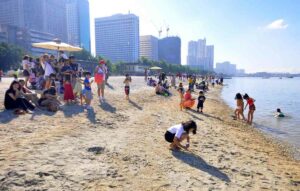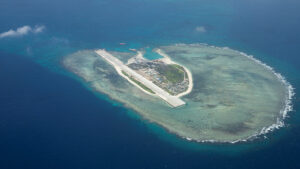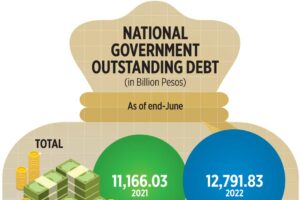Philippines lags Southeast Asian neighbors in smart tourism index

By Beatriz Marie D. Cruz, Reporter
THE PHILIPPINES lags behind some of its Southeast Asian neighbors in terms of readiness in developing smart tourism ecosystems, hampered by high internet costs and accessibility issues in rural areas, the Asian Development Bank (ADB) said.
In a report entitled “Smart Tourism Ecosystem Development Readiness in Southeast Asia,” the Philippines received an average readiness score of 56. A score of 100 indicates a country’s ability to adopt an enabling environment for smart tourism.
Among six Association of Southeast Asian Nations (ASEAN) members in the index, the Philippines ranked fourth, behind Thailand (72), Vietnam (67) and Indonesia (66).
The Philippines was ahead of Laos (53) and Cambodia (50).
“Despite national tourism policies prioritizing digitalization backed by strong tourist and industry demand, smart tourism ecosystem development in Southeast Asia is constrained by insufficient finance and limited digital skills, urban-rural digital divides, and an evolving legal and digital policy environment,” the ADB said in the report.
Having an ecosystem that enables smart tourism boosts a country’s attractiveness as a tourist destination, the ADB said.
“The Philippines demonstrates strong gender equality, high average broadband internet and 4G coverage, and good transaction infrastructure supporting online access to finance. Additionally, the Philippines has high digital talent availability,” the ADB said in the report.
The index measured a country’s overall readiness based on two factors — enabling environment and technological readiness.
The Philippines received a score of 57 under enabling environment, which assesses a country’s tourism competitiveness and digital inclusiveness in the legal, financial, social, and geographic fronts.
The report noted Laos and the Philippines scored highest in terms of equality between men and women’s internet usage.
However, the Philippines scored the lowest among its regional neighbors in terms of the urban-rural digital divide. Digital gaps are “perpetuated by unreliable electricity and network coverage gaps, low literacy rates, unafforda-ble internet services, and language barriers,” ADB said.
The Philippines also scored below-average on tourism competitiveness, legal environment for businesses, and financing options for technological development.
The country also received a score of 55 in terms of technological readiness, second lowest among the six ASEAN members.
The Philippines received low scores in terms of average internet speed, percentage of rural households with internet access, percentage of households or businesses with a computer, mobile access affordability, and research and development for digital innovation.
Among ASEAN counterparts, the Philippines scored the lowest on broadband internet costs and availability of electronic visas (e-visa).
All six countries scored low on access to electronic payments, ADB added.
ADDRESSING ISSUES
The ADB said the Philippines needs to address the urban-rural digital divide, expand financing options, lower broadband costs, and launch an e-visa facility.
The ADB noted the Tourism department is working to close the urban-rural digital divide by allocating $2 million to local government units (LGUs) for smart tourism projects.
The Philippines also started offering e-visas to some countries in the latter part of 2023 and is working with development partners to improve its smart tourism ecosystem. The ADB recently approved funding for the Davao Public Transport Modernization Project, which will establish a smart transportation system in Davao.
Overall, the ADB said the six ASEAN members struggle over a lack of digital infrastructure investments, urban-rural gaps, and threats to data privacy and cybersecurity.
Leonardo A. Lanzona, an economics professor at the Ateneo de Manila University, said the Philippines must differentiate its tourism sector from its ASEAN neighbors to boost its share of the global market.
“The current digital transformation makes this more difficult since now we need more technologically savvy tourism workers, if not a more educated workforce, to take advantage of the opportunities offered by the new technology,” Mr. Lanzona said in a Facebook Messenger chat.
Sherwin E. Ona, a former associate dean at the De La Salle University College of Computer Studies, said the Philippine government must adopt smart tourism policies.
“Smart tourism should adopt platforms that can capture and aggregate customer needs and demands and at the same time link supply chains. An example of this is having a single online access point for tourism destination per region or province. These smart tourism portals can link the sites, together with accommodations, dining, shopping, and transportation sites that tourists can avail,” he said in a Viber chat.
The Philippines attracted 5.45 million tourists in 2023 and is targeting 7.7 million tourist arrivals this year.
To compare, 23 million international tourists visited Thailand in 2023, while 12.6 million and 11.68 million tourists visited Vietnam and Indonesia, respectively.




